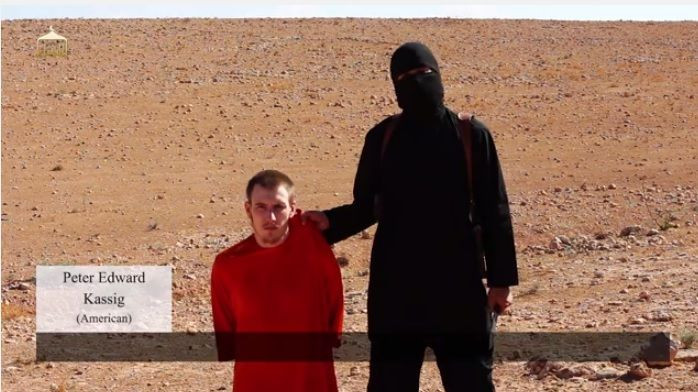ISIS Hostage Peter Kassig Was Among Americans US Tried To Rescue In Raqqa

Islamic State hostage Peter Kassig was among the United States citizens that U.S. Special Operations forces attempted to free from the extremist group in a covert operation this summer, according to a State Department spokesperson who spoke on condition of anonymity. That was the same operation that failed, by a matter of hours, to rescue U.S. journalist James Foley, who was later beheaded by the Islamic State group.
Since the operation took place, ISIS has released four videos showing the beheadings of U.S. citizens James Foley and Steven Sotloff, and British nationals Alan Henning and David Haines. The group threatened to kill Kassig next in a video released Friday.
Kassig and a “small number of Americans” were reportedly being held in the Islamic State’s de facto headquarters in Syria, Raqqa, at least until June.
“U.S. forces conducted this high-risk operation as soon as the president and his national security team were confident the mission could be carried out successfully and consistent with the unique requirements for undertaking such operations,” the State Department spokesperson said. “Unfortunately, we were not able to rescue Peter and his fellow hostages in that mission.”
The State Department said it reached out to “over two dozen countries” that might have had intelligence or influence useful to rescue Kassig and other American hostages before the president authorized the mission, the spokesperson said. FBI agents interviewed former ISIS hostages in Europe, hoping to nail down the militants' daily routine and the prisoners’ location, according to a report in the New Yorker. The National Security Agency then tried to pinpoint the exact location of the prison using satellite surveillance; drones would have tipped off the militant group formerly known as the Islamic State of Iraq and Syria.
It appears ISIS had its own intelligence regarding the operation. The mission failed because “the hostages were not present ... at the site of the operation,” the State Department told the Washington Post after ISIS released a video purportedly showing the beheading of James Foley.
A former Army ranger and aid worker, Kassig was taken by ISIS militants in October 2013 after which he reportedly converted to Islam. He is now known as Abdul-Rahman Kassig. He was on his way to Deir Ezzor, Syria, from Turkey when the militants stopped the ambulance he was driving in and arrested his entire group, according to an activist and journalist in Deir Ezzor who uses the name Abdul Hamid and said he knew Kassig. The others were released, but Kassig was kept in Raqqa, he said.
The State Department was not able to “detail every effort we made or every tool we are using,” to rescue Kassig and other American citizens being held in Syria, but said in an emailed statement “those efforts continue every day.”
© Copyright IBTimes 2024. All rights reserved.






















